Unboxing a Pioneer’s Legacy

Born in 1919, Jane Hinton, V’49, came of age when opportunities for women in science and medicine were scarce — and for Black women, nearly nonexistent. Nevertheless, by the time she was 30, Hinton had already made an indelible mark in microbiology when she achieved a second, history- making milestone: graduating from Penn Vet as one of the first two Black women veterinarians in the U.S. (Alfreda Johnson Webb, a Tuskegee University graduate, was the other.)
Between college and veterinary school, Hinton served as a laboratory technician for the U.S. War Department at Fort Huachuca, Arizona. And after earning her VMD, she returned to her hometown of Canton, Massachusetts, where she practiced as a small animal veterinarian. She later joined the U.S. Department of Agriculture in Framingham as a federal inspector, contributing to research and outbreak response related to livestock diseases.
Yet, for all her accomplishments, Hinton is little known outside scientific and veterinary circles. Now, a special gift to Penn Vet and the Kislak Center for Special Collections, Rare Books, and Manuscripts at the University of Pennsylvania Libraries will help change that. Recently, Penn acquired the Jane Hinton Collection, an archive of the trailblazerʼs personal papers, photographs, and memorabilia. From her childhood scrapbooks to wartime photo albums, veterinary school mementos to public health papers, the collection paints an intimate portrait of a woman whose influence spanned science, medicine, and history. It also provides a glimpse into Hinton’s interests beyond her professional life.
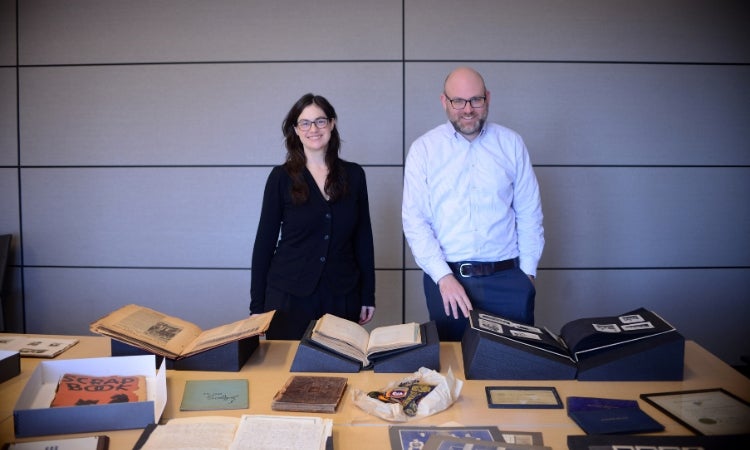
How did Penn acquire the collection?
THUDIUM: It was a bit of serendipity—and a little bit of a scramble. Early this year, we learned that a cache of Hinton’s papers was coming up for auction in New York as part of a sale of African American historical manuscripts. You can imagine our surprise: Dr. Hinton is an alumna of Penn Vet, yet we had no idea her diaries, photos, and certificates existed. Once we confirmed the lot was truly her collection, our team moved quickly to bid.
FRAAS: The auction opened higher than expected, and bidding was steep and competitive. I remember thinking, “It’s gone.” Fortunately, one of our donors and alumni—CarolineSchimmel, CW’67 — was at the auction and stepped in. In an almost storybook ending, she bid on the items on our behalf. Thanks to her gift, we were able to secure the collection for the Penn Libraries.When the gavel fell, we cheered.And we’ve since acquired eight more boxes of Hinton’s papers and collections.
What do the materials reveal about her life?
THUDIUM: We knew the big points.The collection fills in details,showing a whole person with humor and quirks. Many of the pieces are personal. Her teenage scrapbook includes boxing clippings and odd newspaper headlines from her hometown. A family Bible from the1840s sits alongside USDA disease reports and her Penn Vet diploma.Then there are candid photos from her Army years—soldiers at Fort Huachuca, Buffalo Soldiers regiment patches, camp newsletters. These are all textures of daily life.
FRAAS: The collection shows a determined, curious person who loved animals and science. Her Penn Vet classmates elected her class secretary and historian, indicating that she was well-respected among her peers. We see that she’s significant not only as a “first,” but also as a leader, colleague, and professional who excelled across disciplines. Hinton’s resilience also comes through. Her parents sent her abroad to avoid segregated schools in the U.S., but she returned to pursue higher education here at home. Later, she went into rural communities as a government inspector. Working as a Black woman veterinarian in the 1950s,showing up on farms—I think it’s safe to say that it took a great deal of grit. The papers in the collection serve as a testament to her courage and determination.
THUDIUM: Additionally, Hinton was a trailblazer on many fronts. Sheco-developed a medium that remains the global standard for antibiotic susceptibility testing, and she was one of the first Black women in the country to earn a VMD. That alone is remarkable. What also stands out is the way her life bridged three fields: microbiology,veterinary medicine, and public health. That range feels very modern—very “One Health”—but she was doing it more than 70 years ago.
The materials span Hinton’s childhood, wartime service, scientific work, and more. How do you see this collection having an impact?
THUDIUM: Representation matters.Veterinary medicine has not always recorded or acknowledged the contributions of women, and even less so those of Black women. Now students, faculty, and historians can literally hold pieces of her life — her diploma, class yearbook, or lab notes—and learn from a pioneering alumna. The collection reinforces that different voices and talents in STEM isn’t a new idea.
FRAAS: The impact will extend far beyond Penn. For example, her lab reports from the 1940s are highly valuable to scholars of science and medicine. Public health historians may learn from her papers on food safety and disease surveillance.Military historians may be interested in her experiences during World War II. Her papers intersect veterinary medicine, microbiology, civil rights,women’s history, and Black history.It’s precisely the kind of collection that sparks interdisciplinary research and new scholarship.
Personally, what struck you most when going through the collection?
FRAAS: For me, it was the DEA license. It’s an ordinary document, but it signaled her authority as a scientist and practicing veterinarian at a time when the field was far from integrated.
THUDIUM: I was taken with the photographs. Some look like professional magazine shots —
beautifully composed images of soldiers and camp life. They remind you that archives aren’t just data; they’re glimpses into how someone saw themselves and their times.
What are your hopes for how people will use the Hinton Collection?
THUDIUM: We hope it will be studied and shared widely. I’d like to see students use the papers for
projects and theses. Imagine a veterinary student writing about her influence on antibiotic testing, or a history student exploring the experience of Black women during World War II. The items — congratulatory letters from family friends, handwritten notes from colleagues — make her history come alive.
FRAAS: I hope it encourages more collecting. Jane Hinton’s story could have been lost. Without the auction, these papers might never have surfaced. How many other scientists — especially women and people of color — have archives tucked away in attics? Maybe seeing Hinton’s collection will inspire families to donate or institutions to seek out these histories. On a personal level, I hope anyone who encounters her collection feels what we felt opening it: a connection to
a remarkable woman. Her legacy, in her own handwriting and photographs, can educate and inspire future generations.

Childhood and family // 1919
Jane Hinton was born in Canton, Massachusetts. Her mother, Ada Hawes Hinton,
was a schoolteacher. Her father, William Augustus Hinton, MD, was a bacteriologist
and pathologist who developed a widely used diagnostic test for syphilis. He was the first Black professor at Harvard Medical School and the first Black author of a
medical textbook.
The Hinton’s sent Jane, at the age of six, and her sister to school in Europe. Jane
eventually returned to the U.S. for high school and graduated from Montpelier Seminary in 1935.
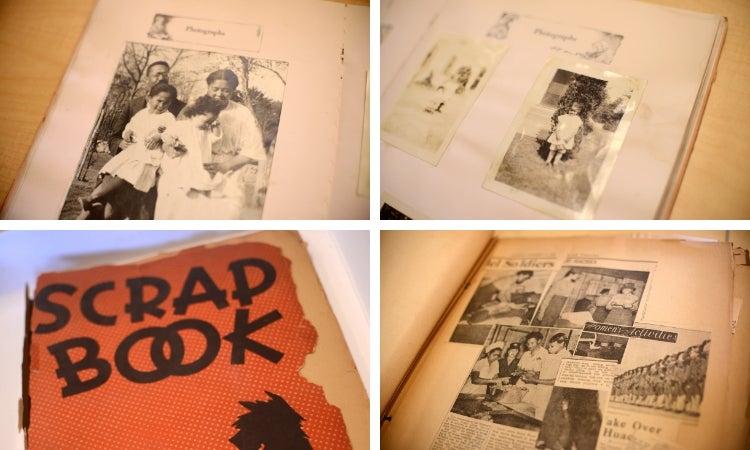
Education and early career // 1939
Hinton earned a bachelor’s degree from Simmons College in 1939. She then trained at Harvard University in the Department of Bacteriology and Immunology, working with John Howard Mueller, a biochemist, pathologist, and bacteriologist. With Mueller, she co-developed the Mueller–Hinton agar. The culture medium enables scientists to grow bacteria in a way that doesn’t interfere with antibiotic tests.

Clockwise from right: Petri dish showing an antibiotic test on Mueller-Hinton agar. Memorabilia from Hinton’s college days at Simmons and her diploma. Hinton’s Simmons College thesis was titled “A Public Health Survey of Canton, Massachusetts.” The 183-page manuscript was completed in May 1939.
World War II service // 1945
Hinton served as a medical laboratory technician for the U.S. War Department at Fort Huachuca, Arizona, during World War II. She worked in the Army hospital laboratories supporting the health of Black troops stationed at the base. Building on her bacteriology training, she performed diagnostic and clinical lab work essential for infection control and troop readiness.

Veterinary career // 1949
After the war, Hinton entered Penn Vet. She was elected class historian and class secretary and graduated with her VMD in 1949. Following graduation, she returned to Canton and established a
small-animal practice, serving the local community.
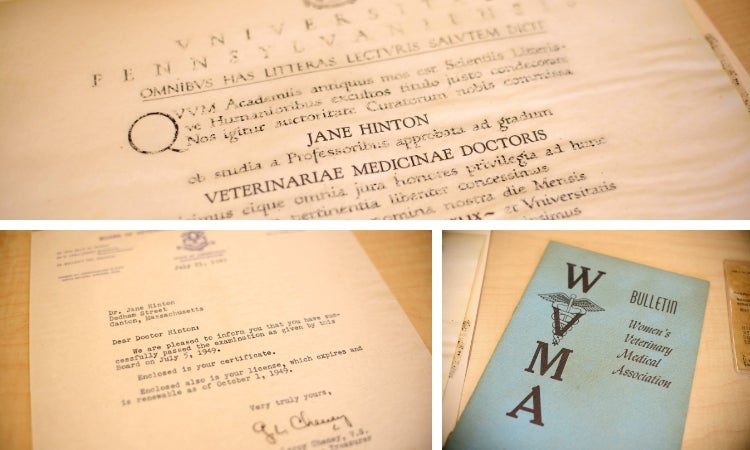
Veterinary career // 1955
In 1955, Hinton transitioned from private practice to a public service role, serving as a federal government veterinary inspector based in Framingham, Massachusetts. In the role, she investigated livestock disease outbreaks, tracked public health risks, and authored reports on issues ranging from dairy safety to wastewater management. The responsibilities positioned her
as an early practitioner of what we now call “One Health,” which recognizes the connections between environmental conditions, animal health, and human well-being.
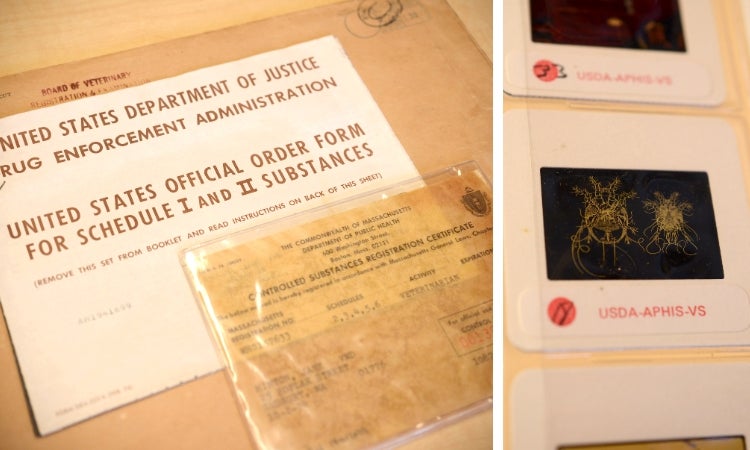
Retirement // 1960
After retiring in 1960 at age 41, Hinton lived quietly in Canton, Massachusetts, tending her garden and caring for her animals at home. She remained there until her death in 2003, just shy of her 84th birthday. Hinton’s collection includes letters written to and from friends and family post-retirement.
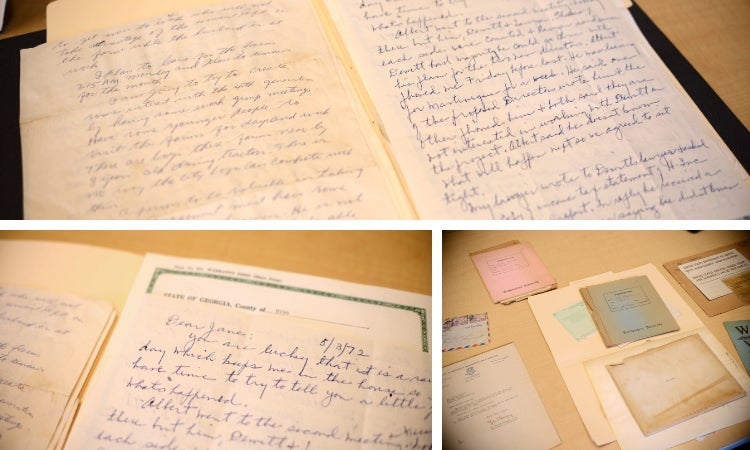
More from Bellwether
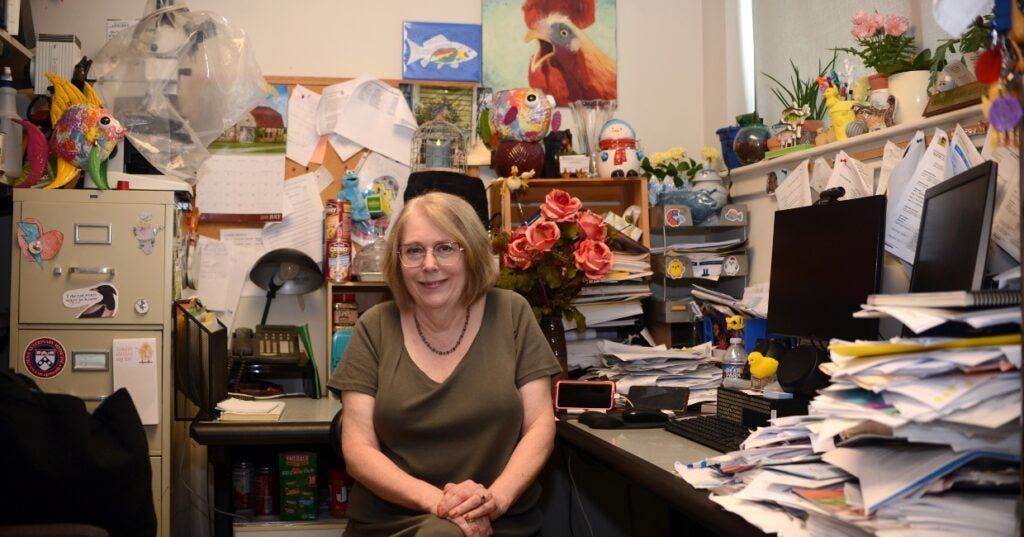
In the Office with Donna Kelly, DVM, MASCP, DACPV, DACVPM
Donna Kelly, DVM, MASCP, DACPV, DACVPM, shares her New Bolton Center office with the campus’s microbiology reference library.

Breaking New Ground: Penn Vet Builds Future-Ready Learning Hub
Set to open in the coming months, the 11,800-square-foot clinical skills center will be the first dedicated classroom space on the Kennett Square campus, ushering in a new era of…
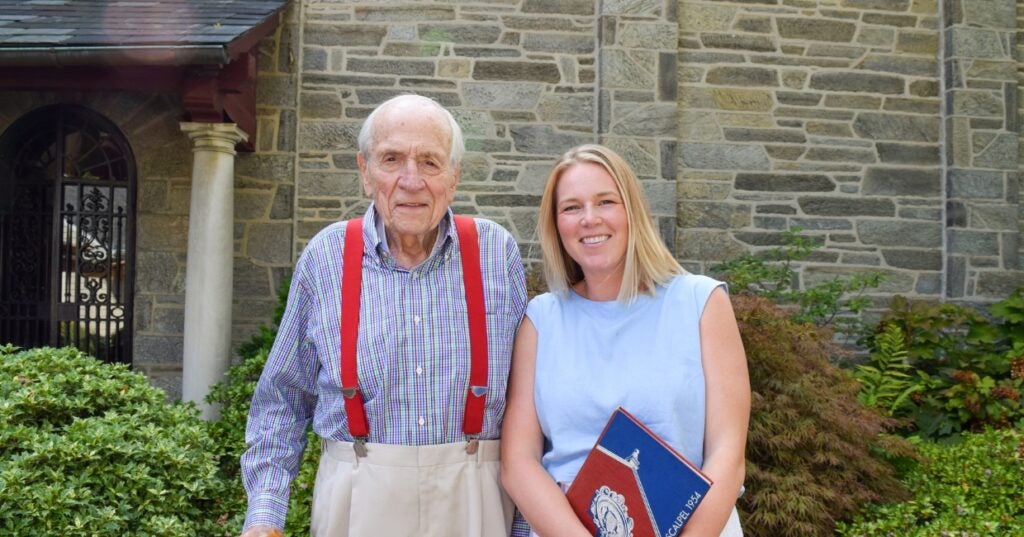
A Love of Animals and the Land
The Penn Vet of Dean Snyder, V’54, was a very different place than today. So was the world.
